A Bushmaster is any one of four species in the taxonomic genus Lachesis. All four species live in Central and/or South America. These reptiles are members of the Viperidae family. As is the case with the rest of the vipers, Bushmasters are venomous. Read on to learn about the Bushmaster.
Description of the Bushmaster
Each species is slightly different, but all have thick bodies and broad heads. The Chocoan species has reddish brown scales with black banding. The black-headed and Central American species have light brown scales with dark brown banding along their backs. The South American species has orange-brown scales with dark brown or black banding.
These vipers range in size based on the species. Most measure between 7 ft. and 10 ft. long, but some reach lengths up to 13 ft. and weights up to 15 lbs.
Interesting Facts About the Bushmaster
This reptile has several unique traits and adaptations. Learn what makes these snakes so interesting below.
- Mute Rattlesnake – Like copperheads, cottonmouths, rat snakes, black racers, king snakes, and more, this species rattles its tail when threatened like a rattlesnake does. They have no rattles on the tips of their tails, but they have a spine on their tail that rattles against leaves and underbrush.
- Egg Production – These reptiles are unique among vipers in their reproductive strategy. Most vipers retain their eggs within their bodies and give “live” birth. Unlike most of their viper cousins, Bushmasters lay eggs.
- Egg Protection – After they lay their eggs, these snakes are one of the few species that remain to guard them. Most snakes abandon their eggs after laying them, but these reptiles remain nearby and attack any potential predators.
- Self-Sufficient Snakes – Despite the fact that the young snakes measure just 15 in. long, when they hatch their mother ceases her avid protection. The newly-hatched reptiles strike out on their own without any parental protection.
Habitat of the Bushmaster
All four species live in similar habitat types. They utilize warm ecosystems with dense vegetation and high rainfall, primarily tropical rainforests. Additionally, they range into cleared areas directly adjacent to forests while hunting.
Distribution of the Bushmaster
Each species has its own unique distribution and range. The genus as a whole lives throughout various regions of Central and South America.
You can find the Chocoan species throughout Ecuador, Columbia, and Panama. The black-headed species lives in a small region of Costa Rica. As their names suggest, the South American species ranges throughout South America, and the Central American species lives throughout Central America and into South America.
Diet of the Bushmaster
Like all snakes, these reptiles are carnivores. They only eat other animals, and never feed on any types of plants. Younger and smaller individuals prey on smaller animals. Conversely, larger snakes hunt for larger prey.
Some common prey items for these snakes include rats, mice, rabbits, birds, lizards, and other snakes. Like most vipers, they hunt using ambush rather than actively searching for prey.
Bushmaster and Human Interaction
Because these snakes live in dense rainforest, humans rarely cross paths with them. They also help reduce the number of rodent pests in an area. However, their venom is toxic, and these snakes do bite when confronted. Because of this, humans often fear and attempt to exterminate these reptiles.
Domestication
Humans have not domesticated this snake in any way.
Does the Bushmaster Make a Good Pet
Because their venom can potentially kill, these snakes do not make good pets.
Bushmaster Care
Humans do not frequently house this snake in zoos or research facilities. Collecting venom is important in creating antivenom to use when treating snakebites, but these particular reptiles do not fare well in human care.
Behavior of the Bushmaster
Like many other snake species, these reptiles prefer living alone. They hunt for prey at sunset and during the night, making them crepuscular and nocturnal, respectively. As breeding season arrives, these snakes use their sense of smell to locate mates.
Reproduction of the Bushmaster
After mating, females find an abandoned burrow to lay their eggs. She remains in or near the burrow to guard the eggs, and only leaves to drink water. During the course of the two-month incubation period, the female does not eat.
Once the young hatch, she leaves them to fend for themselves. Even just after they have hatched, the young snakes have fully functioning fangs and venom. They can capture and kill small prey soon after hatching.


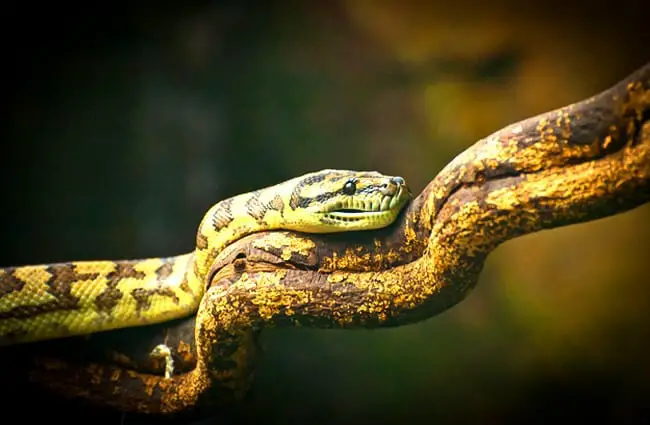

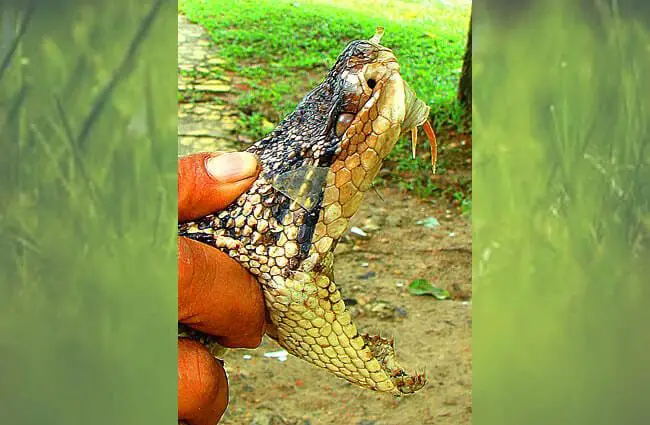
![Surprised Bushmaster, coiled to strike Surprised Bushmaster, coiled to strike Photo by: Christopher Murray [Public domain]](https://animals.net/wp-content/uploads/2019/10/Bushmaster-5-650x425.jpg)

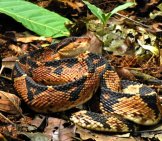

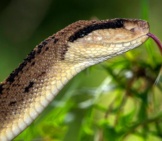
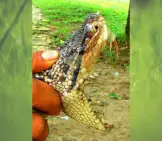
![Surprised Bushmaster, coiled to strike Surprised Bushmaster, Coiled To Strike Photo By: Christopher Murray [Public Domain]](https://animals.net/wp-content/uploads/2019/10/Bushmaster-5-162x141.jpg)
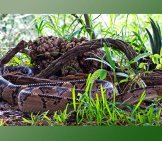
![Red Angus Closeup of a beautiful Red Angus cowPhoto by: U.S. Department of Agriculture [pubic domain]https://creativecommons.org/licenses/by/2.0/](https://animals.net/wp-content/uploads/2020/03/Red-Angus-4-238x178.jpg)












![Red Angus Closeup of a beautiful Red Angus cowPhoto by: U.S. Department of Agriculture [pubic domain]https://creativecommons.org/licenses/by/2.0/](https://animals.net/wp-content/uploads/2020/03/Red-Angus-4-100x75.jpg)

